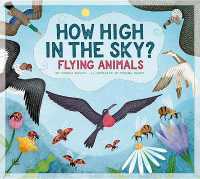Full Description
The third edition of the Handbook of Research on Learning and Instruction provides an overview of contemporary research advances in the science of learning (how people learn) and the science of instruction (how to help people learn). With chapters written by leading researchers from around the world, this volume examines learning and instruction in a variety of learning environments, including in and out of K-16 and adult learning classrooms. Contributors to this volume demonstrate how and why educational practice should be guided by research evidence concerning what works in instruction. The book is written at a level that is appropriate for students, researchers, and practitioners interested in evidence-based approaches to learning and instruction.
The book is divided into two sections: learning and instruction. The learning section consists of chapters on how people learn in a variety of domains, from reading and writing to science and math and beyond, as well as how people acquire the knowledge and processes required for critical thinking, self-regulation, motivation, and more. The instruction section consists of chapters on effective instructional methods—feedback, visualizations, active learning, self-explanation, collaboration, inquiry, games simulations, adaptive learning technologies, among others.
Each chapter in this third edition has been thoroughly revised to integrate recent advances in the field of educational psychology. Selected returning chapters have been merged for concision and comprehensiveness, while new chapters reflect cutting-edge insights into socioemotional learning, educational neuroscience, active learning in lecture classes, and generative learning strategies. As with the previous two editions, this foundational volume showcases the highest quality research being done on learning and instruction by traversing a broad array of academic domains, learning constructs, and instructional methods.
Contents
1. Introduction to Research on Learning 2. Learning to Read 3. Learning to Write 4. Learning Mathematics 5. Learning Science 6. Learning Social Studies 7. Learning an Additional Language 8. Learning in the Arts 9. Learning to Think Critically 10. Learning to Monitor and Regulate Learning 11. Emotions and Learning 12. Motivation and Learning 13. Social-Affective Neuroscience and Learning 14. Introduction to Research on Instruction 15. Instruction Based on Feedback 16. Instruction Based on Examples and Well-Prepared Practice 17. Instruction Based on Active Learning 18. Instruction Based on Generative Learning Activities 19. Instruction Based on Collaborative Learning 20. Instruction Based on Inquiry 21. Instruction Based on Discussion 22. Instruction Based on Visualizations 23. Instruction based on Simulations, Games, and Virtual Reality 24. Instruction Based on Adaptive Learning Technologies








